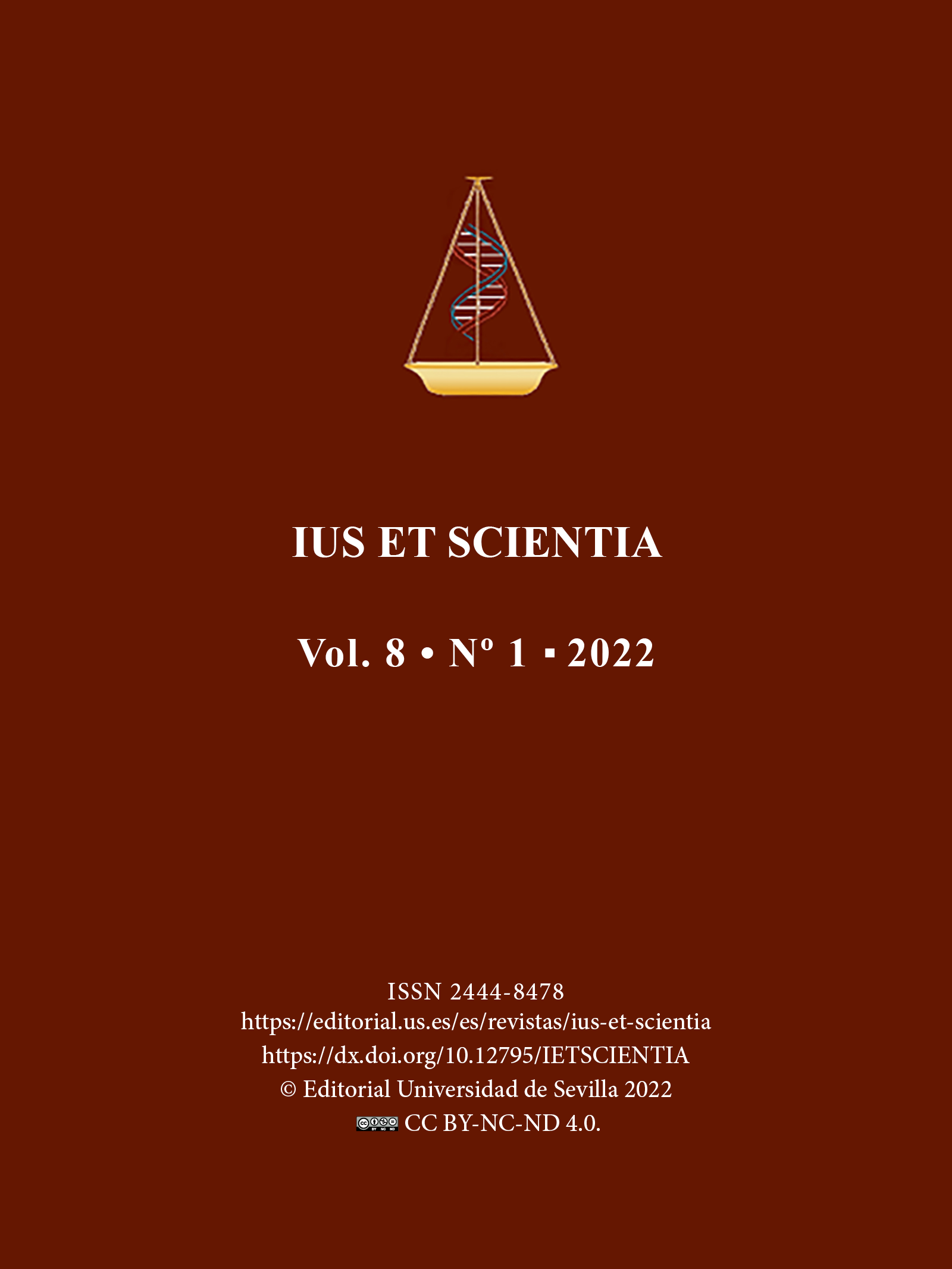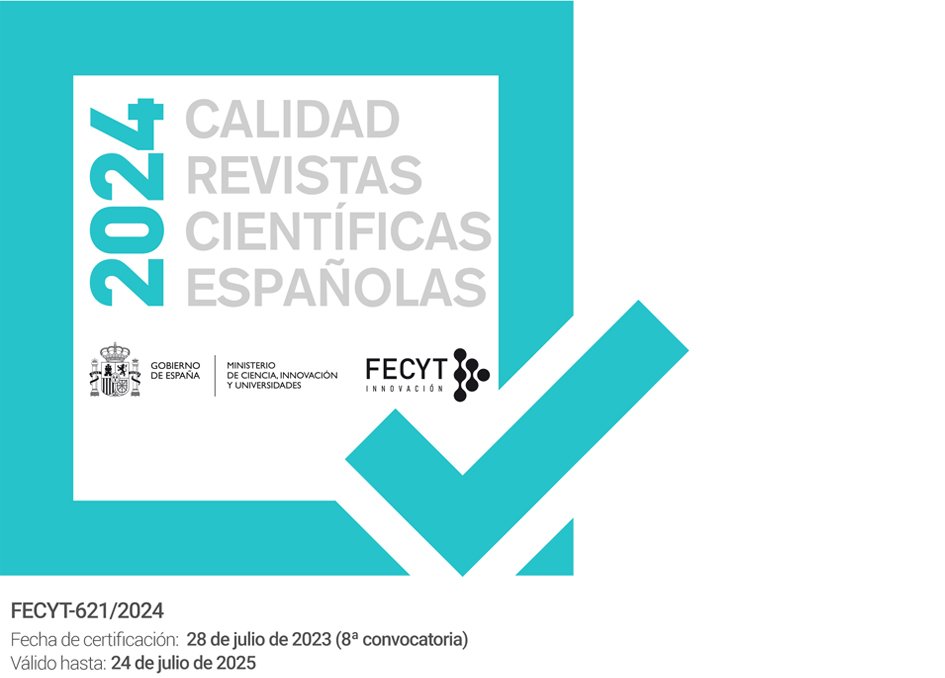Big Brother, Science fiction or reality?
DOI:
https://doi.org/10.12795/IETSCIENTIA.2022.i01.02Keywords:
artificial intelligence, big data, mass surveillance, data protection, fundamental rights, national security, social score, remote biometric identification systemsAbstract
In a globalized world that generates a multitude of data and information, hypervigilance constitutes one of its characterizing features.
In this study, we will examine this Big Brother phenomenon by contrasting the existing social credit system in China with the regulation that, in terms of potential mass surveillance of the population, can be found in Europe, in order to increase citizen security facing the new global threats. Two different social models that, however, show a shocking reality: whether we are aware of it or not and, despite the limits established around this issue and a greater awareness of its danger for fundamental rights in the European environment,
we are not exempt from this hypervigilance. In this sense, the importation of fundamental rights into the digital sphere is imperative to avoid turning our rule of law into a police state.
Downloads
References
Arenas Ramiro, Mónica (2021), Reino Unido y sistemas de vigilancia: la STEDH Big Brother Watch, de 25 de mayo de 2021, Diario La Ley. Recuperado el 11 de noviembre de 2021 de https://diariolaley--laleynext--es.us.debiblio.com/Content/Documento.aspx?params=H4sIAAAAAAAEAE2OwWrDQAxEv6a6FIpjx-Ski-tLIJTQmt7ltbBFNrvNruzGf1-l7qGCQYh5jOY2c1o7visuMoqn4ISer5RlIchriGG9YpdmBqU-Y7V_OrjCtDOVQE5n8m10uKsehyzcUW8UxDRwalYsQKOSf-eM-7KEPMXvN7JPpBJDQ2nLlmHAtitsqqqs6xoWTtkA_JSRgzJMMk4nk258ZkpuOtPIeAziJL5Q_rqDDxfr8vFr_gebWdXCeg2bB87bbkn5lTyH4a_GD0aQSgoLAQAAWKE#tDT0000332555_NOTA28
Biometric Recognition and Behavioural Detection Assessing the ethical aspects of biometric recognition and behavioural detection techniques with a focus on their current and future use in public spaces (Informe), de 6 de Agosto de 2021, https://www.europarl.europa.eu/thinktank/en/document/IPOL_STU(2021)696968
Carta de Derechos Fundamentales de la Unión Europea, de 30 de marzo de 2010, (2010/C 83/02) https://www.europarl.europa.eu/charter/pdf/text_es.pdf
Consejo de Estado Chino, (2014), Planning Outline for the Construction of a Social Credit System (2014-2020). Recuperado el 3 de noviembre de 2021 de https://chinacopyrightandmedia.wordpress.com/2014/06/14/planning-outline-for-the-construction-of-a-social-credit-system-2014-2020/
Digital Guide IONOS, (2021), Sistema de crédito social chino: una puntuación con muchas consecuencias. Recuperado el 3 de noviembre de 2021 de: https://www.ionos.es/digitalguide/online-marketing/analisis-web/que-es-el-sistema-de-credito-social-chino/
Drinhausen, Katja y Brussee,Vincent, (2021), China’s Social Credit System in 2021: From fragmentation towards integration. Recuperado el 5 de noviembre de 2021 de: https://merics.org/en/report/chinas-social-credit-system-2021-fragmentation-towards-integration
Fernández Hernández, Carlos B (2021), El Parlamento Europeo estudia nuevas enmiendas a la propuesta de Reglamento sobre IA en materia de identificación biométrica, Diario la Ley, Recuperado el 11 de noviembre de 2021 de https://diariolaley--laleynext--es.us.debiblio.com/Content/Documento.aspx?params=H4sIAAAAAAAEAE2OQUvEQAyFf425CDIdC-5lLnU9CLKIFu_pNLTB2YzOpHX7743Wg4fHI7yPl_e5UNl6umhYeeKEEhmvz1h5RaibZNnOoS8LgeJQw217dRedqTF5wKgLpmOOwbufg1fqcTAKchmpdFtwoFkxvVANrfdQ5_x1QvuEylk6LHs3j2M4PTjnfHNo2oODlUo1ILzxRKIEM0_zk0l3vhKWOD_jROFROHK-wfpxgSTvtuX1N_wPdouqlQ0qewYxmR9R6R4Tyfg34xvS2eXSCwEAAA==WKE
Lee, Amanda, (2020), What is China’s social credit system and why is it controversial? Recuperado el 5 de noviembre de 2021 de: https://www.scmp.com/economy/china-economy/article/3096090/what-chinas-social-credit-system-and-why-it-controversial
Libro Blanco sobre la IA al establecer que “el uso de aplicaciones de IA para la identificación biométrica remota y otras tecnologías de vigilancia intrusiva deben considerarse siempre de riesgo elevado (…). Vid., Libro Blanco sobre la inteligencia artificial-un enfoque europeo orientado a la excelencia y la confianza, de 19 de febrero de 2020, COM (2020) 65 final, https://ec.europa.eu/info/sites/default/files/commission-white-paper-artificial-intelligence-feb2020_es.pdf
Marco de los aspectos éticos de la inteligencia artificial, la robótica y las tecnologías conexas; propuesta de Reglamento del Parlamento Europeo y del Consejo sobre los principios éticos para el desarrollo, el despliegue y el uso de la inteligencia artificial, la robótica y las tecnologías conexas (Anexo), de 20 de octubre de 2020 , https://www.europarl.europa.eu/doceo/document/TA-9-2020-0275_ES.html#title2
Marr, Bernard, (2019), Chinese Social Credit Score: Utopian Big Data Bliss or Black Mirror on Steroids?- Recuperado el 6 de noviembre de 2021 de: https://www.forbes.com/sites/bernardmarr/2019/01/21/chinese-social-credit-score-utopian-big-data-bliss-or-black-mirror-on-steroids/?sh=4dd9089048b8
Martí, Rosa, (2020) El crédito social chino: cuando el gobierno te pone nota. Recuperado el 5 de noviembre de 2021 de: https://www.esquire.com/es/actualidad/a30361853/credito-social-chino-que-es/
Propuesta de Reglamento del Parlamento Europeo y del Consejo por el que se establecen normas armonizadas en materia de Inteligencia Artificial (Ley de Inteligencia Artificial) y se modifican determinados actos legislativos de la Unión, de 21 de abril de 2021, {SEC(2021) 167 final} - {SWD(2021) 84 final} - {SWD(2021) 85 final}, https://eur-lex.europa.eu/resource.html?uri=cellar:e0649735-a372-11eb-9585-01aa75ed71a1.0008.02/DOC_1&format=PDF
Reglamento (UE) 2016/679 del Parlamento Europeo y del Consejo relativo a la protección de las personas físicas en lo que respecta al tratamiento de datos personales y a la libre circulación de estos datos y por el que se deroga la Directiva 95/46/CE (Reglamento general de protección de datos), de 27 de abril de 2016, DOUE-L-2016-80807, https://www.boe.es/doue/2016/119/L00001-00088.pdf
Resolución del Parlamento Europeo sobre la inteligencia artificial en el Derecho Penal y su utilización por las autoridades policiales y judiciales en asuntos penales, de 6 de octubre de 2021, (2020/2016 (INI)), https://www.europarl.europa.eu/doceo/document/TA-9-2021-0405_ES.html
STEDH (Gran Sala), Case of Big Brother Watch and others v. The United Kingdom, de 25 de mayo de 2021, (Applications nos. 58170/13, 62322/14 and 24960/15). Recuperado de: https://hudoc.echr.coe.int/eng#{%22itemid%22:[%22001-210077%22]}
STJUE de 6 de octubre de 2015, asunto Maximillian Schrems, (C-363/14), Recuperado de: https://curia.europa.eu/juris/document/document.jsf?text=&docid=169195&pageIndex=0&doclang=ES&mode=req&dir=&occ=first&part=1&cid=143358
Published
How to Cite
Issue
Section
License
Copyright (c) 2022 María Dolores García Sánchez

This work is licensed under a Creative Commons Attribution-NonCommercial-ShareAlike 4.0 International License.
Those authors being published in this journal agree to the following terms:
- Authors retain their copyright and they will guarantee to the journal the right of first publication of their work, which will be simultaneously subject to license recognition by Creative Commons that allows others to share such work provided it is stated the author’s name and his first publishing in IUS ET SCIENTIA.
- Authors may take other non-exclusive distribution license agreements version of the published work (e.g. deposit in an institutional digital file or publish it in a monographic volume) provided it is stated the initial publication in this journal.
- It is allowed and encouraged that Author s disseminate their work via the Internet (e. g. institutional digital files or on their website) prior to and during the submission process, which can lead to interesting exchanges and to increase citation of the published work.
- Abstract 627
- PDF (Español (España)) 370
- HTML (Español (España)) 282





